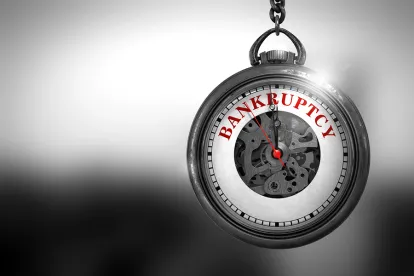Federal Rule of Bankruptcy Procedure 3002.1 was implemented to protect debtors from unanticipated deficiencies in residential mortgage payments following a chapter 13 discharge, and the Bankruptcy Court for the District of Puerto Rico’s recent opinion in In re Feliciano Figueroa[1] illustrates how detrimental the rule can be to inattentive mortgage holders.
The debtor’s confirmed chapter 13 plan provided for curing his prepetition mortgage arrears and continuing with regularly scheduled mortgage payments directly to the bank. At the end of the debtor’s plan, the trustee filed and served a notice of final cure payment pursuant to Rule 3002.1(f).[2] The bank did not respond to the notice within the 21-day required by Rule 3002.1(g),[3] and consequently, the trustee filed the final report and the debtor received his discharge.
Less than two weeks after the discharge was entered, the bank closed its doors and transferred the debtor’s mortgage to another lender. It was not until the debtor attempted to cure his post-discharge default that the new bank informed him he still owed arrears accrued during his bankruptcy case. Although the debtor explained to the bank and the state court that the chapter 13 trustee verified that the mortgage was current at the end of his case, a foreclosure judgment was entered against the debtor. The debtor then filed an adversary proceeding in his bankruptcy case against the bank alleging, among other things, that the bank violated the discharge injunction. See sections 524 and 1328 of the Bankruptcy Code.
The bankruptcy judge focused on Rule 3002.1 and the prior bank’s nonresponse to the trustee’s notice of final cure payment. “By failing to notify the arrears during the bankruptcy on a timely basis pursuant to the rule, [the bank] could not collect any further charges pertaining to the time period of the bankruptcy, even if the debtor was in arrears.” According to the judge, it is this type of “ambush” that Rule 3002.1 seeks to avoid. The judge ruled that the debtor was deemed current on his mortgage because of the bank’s nonresponse, and the collection of “alleged arrears” following the debtor’s discharge violated the discharge order.
Although the bank has appealed this matter to the First Circuit Bankruptcy Appellate Panel, the bankruptcy judge’s opinion serves as a cautionary tale to mortgage holders that receive a notice of final cure payment from a chapter 13 trustee.
FOOTNOTES
[1] Case No. 09-07725, Adv. No. 19-00032, 2021 WL 5815641 (Bankr. D. Puerto Rico).
[2] “Within 30 days after the debtor completes all payments under the plan, the trustee shall file and serve on the holder of the claim, the debtor, and debtor's counsel a notice stating that the debtor has paid in full the amount required to cure any default on the claim. The notice shall also inform the holder of its obligation to file and serve a response under subdivision (g).” Fed. R. Bankr. P. 3002.1(f).
[3] “Within 21 days after service of the notice under subdivision (f) of this rule, the holder shall file and serve on the debtor, debtor's counsel, and the trustee a statement indicating (1) whether it agrees that the debtor has paid in full the amount required to cure the default on the claim, and (2) whether the debtor is otherwise current on all payments consistent with § 1322(b)(5) of the Code. The statement shall itemize the required cure or postpetition amounts, if any, that the holder contends remain unpaid as of the date of the statement.” Fed. R. Bankr. P. 3002.1(g).




 />i
/>i

